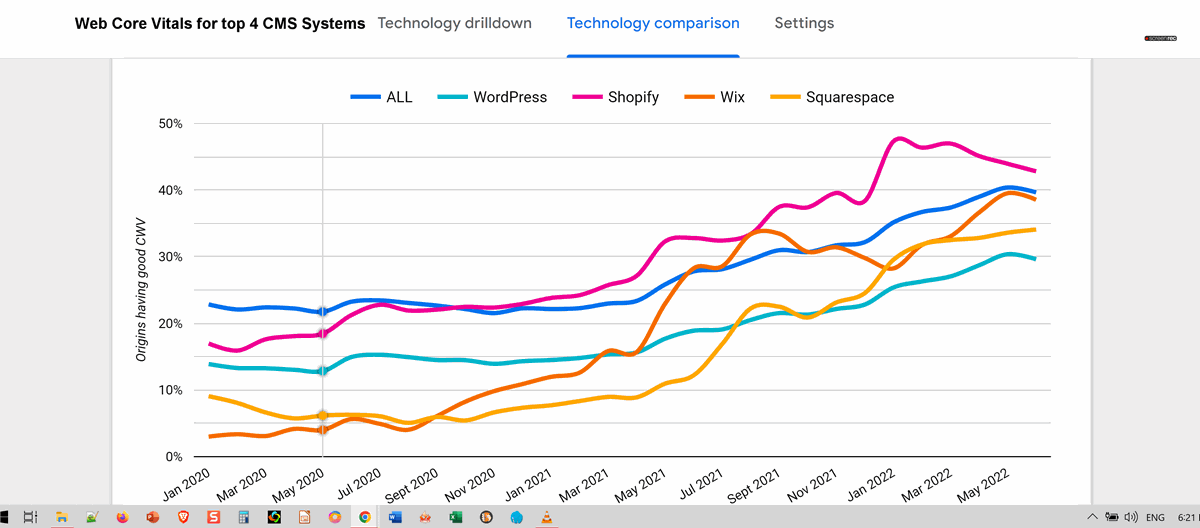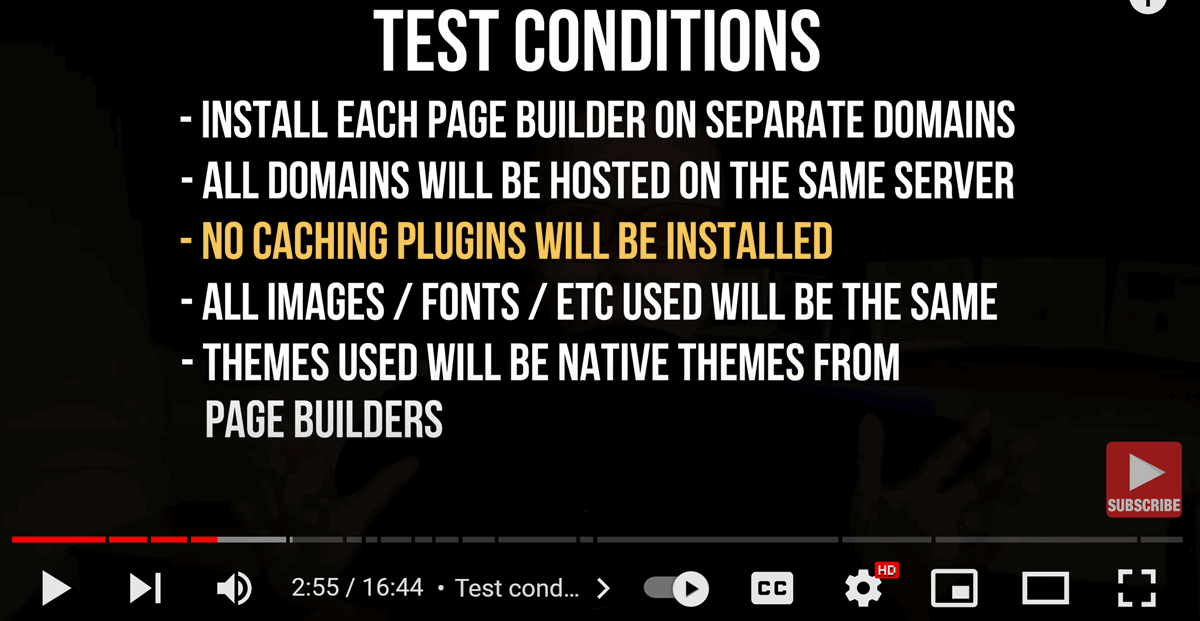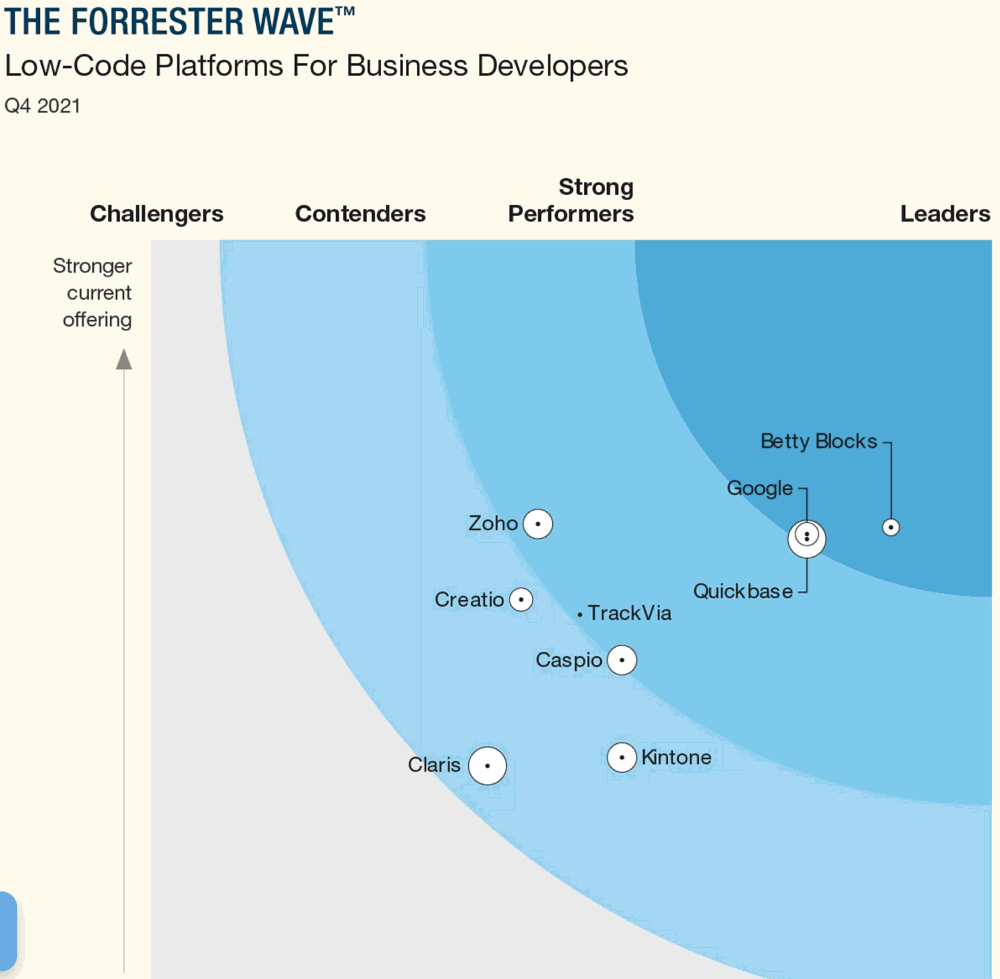WP Tavern has been reporting stories which show WordPress and Automattic under duress for the past few months. It started with the May 12th 2022 story
WordPress Community Attributes Declining Market Share to Performance Issues, Increased Complexity, and the Lagging Full-Site Editing Project. This is a tough indictment for WordPress and some of the evidence is thin and some highly relevant.
Lets start with measurable signals. WordPress has managed to avoid 2022 layoffs that its main rivals are experiencing – Shopify has lost 1000/10% of its workforce while Elementor has shed 60 or 15% of its workforce . But WordPress Market share had declined in April for the first time in 10 years hardly the 19th anniversary present that WordPress founder Matt Mullenweg envisioned. However, Joost DeValk shows that the WordPress decline has quickly stabilized by July 2022 with CMS rivals doing less well.
The Issue of WordPress Performance
Next consider the performance measures. Yes, this is reaching into the apples vs oranges hard to compare categories. Nonetheless, HTTP Archive has collected compelling statistics on WordPress versus 4 other CMS on their Core Web Vitals ratings [see here for Core Web Vitals tutorial].Here is a key live graphic:
 All of the CMS are improving since Jan 2021 in Core Web Vitals average score, but as of June 2022 WordPress has the lowest CWV average rating and Shopify has always had a better rating than WordPress.
All of the CMS are improving since Jan 2021 in Core Web Vitals average score, but as of June 2022 WordPress has the lowest CWV average rating and Shopify has always had a better rating than WordPress.
Even more interesting has been rulings by the newly empowered WordPress Performance Team regarding WebP as core default image format and loading SVG into the Media Library as the vector format grows in popularity. In general, images and media on WordPress websites are important because they typically comprise 65% or more of the average page download burden and thus impact WordPress performance. Two formats, Webp and AVIF are in a battle for primary WordPress core usage. But complicating the choice is the different compression, browser support and extension features of the two formats. Equally daunting is the question of controlling the number and size of the duplicated image thumbnails required by the WordPress core. As Kinsta descibes, the Media Library is subject to a number of development cross currents so expect image and media handling and optimization to be a continuing WordPress sorepoint.
In contrast, the new proposal by the WordPress Performance Team Proposing to Add Persistent Object Cache and Full Page Cache to Site Health Checks seems simple, prosaic. Wrong! Since April 2021 Gutenberg advocates like Jack Cao and Kyle Van Deusen have been arguing that Gutenberg Editor out performs rival PageBuilders in “fair” speed comparison tests. Here is Jack Cao’s video and test conditions from April 2021:
 Note that we have highlighted in orange that Jack has used no caching. Likewise in a December 2021 Kyle Van Deusen also used no caching in his Damn. Gutenberg Smokes Elementor posting in which he states the test conditions:
Note that we have highlighted in orange that Jack has used no caching. Likewise in a December 2021 Kyle Van Deusen also used no caching in his Damn. Gutenberg Smokes Elementor posting in which he states the test conditions:
“For reference, these two landing pages were on the same WordPress install, hosted on a Vultr High Frequency server through Cloudways with no caching enabled.” In fact like Jack Cao, Kyle Van Deusen had little to say about standard WordPress optimization practices such as minification/combination, plugin cleaning, media compression and other standard WP optimizations techniques.
In contrast, the Opensourcery blog posted on Sep 24 2021 Gutenberg vs the PageBuilders- Performance Speed Tests calling into question Jack Cao results and then again 0n Jan 16, 2022 with Are Gutenberg Editor’s Speed Results A Big Lie?? disputing more forcefully the WP Tavern Post – Gutenberg’s Faster Performance Is Eroding Page Builders’ Dominance. In sum WordPress Core and Gutenberg Editor performance remain under question and critical issues for WordPress at this time.
The Issues of WordPress Rapid Growth and Change
The WP Engine report on the WordPress Economy describes how WordPress has been thrust into not just a leadership role in the CMS-Content Management System usage but for the whole Internet. As of Feb 2022 WordPress was used on 43% of Internet web apps and is used by 35% of the Web’s most popular websites. But the broader implication is that the WordPress Economy had become a $637Billion annual business spread among hosting vendors, WordPress theme and plugin providers, plus Web development providers. This huge market was accelerated by the pandemic push to online retail sales and support services but the results have not been unmitigated blessings.
First, WordPress has been thrust into more sophisticated tasks such as multi-service and user support operations, complex membership and event management schemas, tough enterprise integrations roles- all of this spurring rapid innovation but also lacking documentation and exposing some serious security weaknesses. Wordfence in 2020 describes an onslaught of 2,800 attacks per second targeting WordPress. So if your website is not behind a Cloud barrier or server firewall your website is an open target for malicious hackers that can steal information, charge ransom fees or invisibly run your website for their exploitative intents. Fortunately, Hubspot, Ithemes and WPBeginner provide solid security checklists and updated recommendations but these methods add to the complexity of WordPress website management.
The ascent of WordPress has attracted more than hackers. So as we have seen above CMS competitors are improving their performance and SEO-Search Engine Optimization scores competing for the $1/2 trillion WordPress money pot. So now well-financed enterprise developers like Kissflow, Outsystems, Mendix plus enterprise heavyweights like IBM, Oracle, and SAP have latched onto LCAP – Low Code Application Platforms [see Forrester and Gartner for vendor rankings] as their entries into the $1/2 Trillion WordPress “No Coding required” and ease of use that now reaches from Small Business to Enterprise Systems.


And LCAP toolmakers are not alone as Headless WordPress vendors are also promising breakthroughs in low code developmet with performance, security and integration.Both LCAP and Headless WordPress are promoting their own “No coding Required” and easy setup and use. But Headless Development is not without its own tech controversies including GRaphQL vs RestAPI and React.js vs Vue.js.
Nonetheless, LCAP & Headless vendors cite the increasing complexity of WordPress especially with Gutenberg Editor and FSE-Full Site editing where performance problems and lack of nomenclature and workflow clarity have become issues.
The commentary on the WPtavern Analysis has been pretty consistent and these remarks by Wil on May 12th 2022 reflect the chief concerns:
“I agree that FSE and the block editor complexity are killing WordPress.I ran a meetup introducing WordPress 5.9 FSE, and the screwed up faces, puzzled looks, and the barrage of “how do I” questions were damning.
The block editor concept was simple, but the current solution is complicated and overly engineered….Options are all over the place, on the block, on hover, on vertical dots sub menus, and in the properties sidebar. It’s too complicated, and I understand why many people are bailing WordPress for Wix, Squarespace and other easy to manage CMS solutions.” So consistetly commenters are raising the issue that a)both the Gutenberg editor and FSE were late and problematic[read buggy] and b)too awkward/clumsy in their workflow in comparison to what was competitively available in Spotify, Squarespace and a numberof PageBuilders. In effect, both the Gutenberg Editor and FSE have given away styling and design effectiveness to the the Pagebuilers reportoire of PageStyling features.
Development Missions Impossible
Has WordPress become a victim of its own, self-assigned Missions Impossible – “No Coding Required” development, simple and easy to use setup and ongoing operations with preserve backward compatibility, etc. Yes. But also there is the hubris as the Core Team simply did not key off of and respond to innovations that Spotify, Squarespace and its own WordPress PageBuilder and plugin community were offering to the community. Most importantly WordPress cannot afford to choose good but second-best technologies as in the case of WebP vs AVIF, RestAPIvs GraphQl, React.js vs Vue.js FlexBox vs CSS Grid, etc. This is a tough row to hoe – immediate browser and software support vs future features.
But WordPress is not alone in the technology vs mission bind. Elementor has made a major shift to Flexbox in its page design/layout structuring. How will Elementor deliver new CSSGrid capabilities? Low Code Application Programs and Headless WordPress vendors are pitching ambitious usability, speed, and security targets hauntingly similar to the Gutenberg and FSE targets. But comprehensive missions with sophisticated integrations across systems jeopardize reliance on low code/no code approaches. In sum, WordPress and its Plugin community have led in delivering low-code, simple system solutions. Now for comprehensive and complex system integrations, the technology choice will be caveat emptor – get warranties, service level agreements, and working demos as a crucial part of your software solutions. Finally, determine what provisions software suppliers have for future change conditions.
